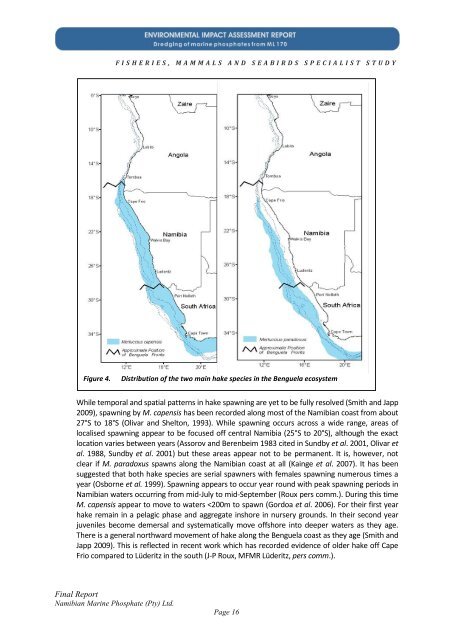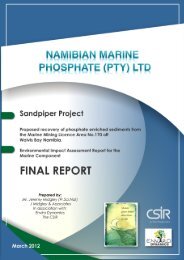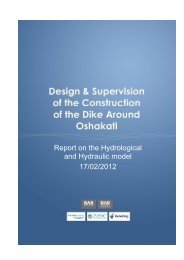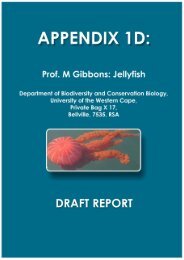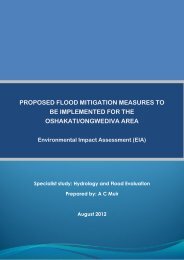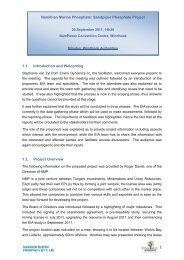Fisheries - Enviro Dynamics Namibia
Fisheries - Enviro Dynamics Namibia
Fisheries - Enviro Dynamics Namibia
Create successful ePaper yourself
Turn your PDF publications into a flip-book with our unique Google optimized e-Paper software.
F I S H E R I E S , M A M M A L S A N D S E A B I R D S S P E C I A L I S T S T U D Y<br />
Figure 4. Distribution of the two main hake species in the Benguela ecosystem<br />
While temporal and spatial patterns in hake spawning are yet to be fully resolved (Smith and Japp<br />
2009), spawning by M. capensis has been recorded along most of the <strong>Namibia</strong>n coast from about<br />
27°S to 18°S (Olivar and Shelton, 1993). While spawning occurs across a wide range, areas of<br />
localised spawning appear to be focused off central <strong>Namibia</strong> (25°S to 20°S), although the exact<br />
location varies between years (Assorov and Berenbeim 1983 cited in Sundby et al. 2001, Olivar et<br />
al. 1988, Sundby et al. 2001) but these areas appear not to be permanent. It is, however, not<br />
clear if M. paradoxus spawns along the <strong>Namibia</strong>n coast at all (Kainge et al. 2007). It has been<br />
suggested that both hake species are serial spawners with females spawning numerous times a<br />
year (Osborne et al. 1999). Spawning appears to occur year round with peak spawning periods in<br />
<strong>Namibia</strong>n waters occurring from mid-July to mid-September (Roux pers comm.). During this time<br />
M. capensis appear to move to waters


